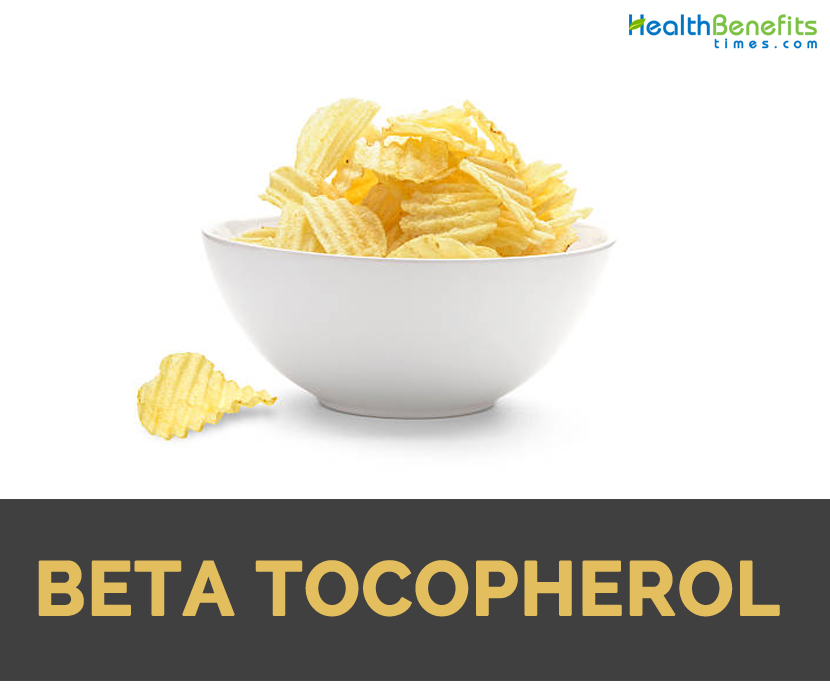 Beta-tocopherol is an antioxidant synthesized by photosynthetic organisms and has crucial roles in human and animal nutrition. It could be oxidized in dry CH2CI2 or CH3CN by one electron for forming cation radicals which deprotonate to form neutral phenoxyl radicals which are immediately further oxidized by one electron to phenoxonium cations. It is a tocopherol in which chroman-6-ol core is substituted by methyl groups at positions 5 and 8.
Beta-tocopherol is an antioxidant synthesized by photosynthetic organisms and has crucial roles in human and animal nutrition. It could be oxidized in dry CH2CI2 or CH3CN by one electron for forming cation radicals which deprotonate to form neutral phenoxyl radicals which are immediately further oxidized by one electron to phenoxonium cations. It is a tocopherol in which chroman-6-ol core is substituted by methyl groups at positions 5 and 8.

Beta-tocopherol is a form of Vitamin E which is known for its antioxidant activity. Vitamin E prevent lipid oxidation by providing its phenolic hydrogen to lipid free radicals. Antioxidant properties of Vitamin E might slow down memory loss in Down’s syndrome patients due to the protection from harmful oxidation caused by excess activity of Superoxidase dismutase. Naturally Vitamin E is produced in algae, plants and some cyanobacteria and is important dietary nutrients for animals and humans.
Food Sources of Beta Tocopherol
| Food name | Weight (g) | Beta Tocopherol (mg) |
| Cheeseburger | 199 | 5.49 |
| Potato chips | 28 | 2.93 |
| Sunflower seed | 135 | 1.90 |
| Wocas | 28.35 | 1.84 |
| Amaranth | 246 | 0.93 |
| Almonds | 157 | 0.66 |
| Peanuts | 146 | 0.53 |
| Pecans | 109 | 0.43 |
| Poppy seed | 2.8 | 0.23 |
| Kielbasa | 370 | 0.22 |
| Salami | 9.8 | 0.20 |
| Avocados | 230 | 0.18 |
| Mozzarella cheese | 228 | 0.18 |
| French fries | 164 | 0.18 |
| English walnuts | 117 | 0.18 |
| Peanut butter | 32 | 0.17 |
| Pistachio | 123 | 0.16 |
| Spelt | 194 | 0.16 |
| Coconut oil | 13.6 | 0.08 |
| Coleslaw | 191 | 0.08 |
References:
https://pubchem.ncbi.nlm.nih.gov/compound/beta-tocopherol#section=Top
https://en.wikipedia.org/wiki/Beta-Tocopherol
https://www.matreya.com/Products/iraci-wbribetai-wbrTocopherol__1071.aspx
